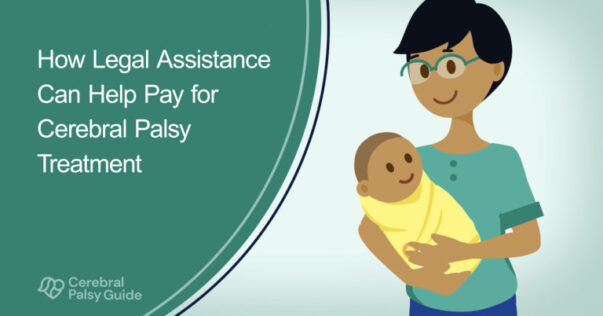What is cerebral palsy treatment?
The primary treatment options for cerebral palsy are medication, therapy, and surgery. The goal of cerebral palsy treatment is to manage symptoms, relieve pain, and maximize independence to achieve a long, healthy life.
Cerebral palsy treatment is tailored to each individual to target and treat their specific symptoms.
The type of cerebral palsy treatments needed can depend on:
- Co-occurring conditions
- Level of impairment
- Location of movement problems
- Type of cerebral palsy (spastic, athetoid, ataxic, hypotonic, and mixed)
Considerations before starting treatment
Treatment for a child with cerebral palsy is not solely focused on correcting their physical disabilities. There are also social and emotional aspects of living a more fulfilling life that should be considered when choosing cerebral palsy treatment options.
Many children are content with their disabilities. As a parent, it is important to consider their feelings.
Some treatments can be stressful and uncomfortable and may not be in the best interest of the child. It is critical to discuss the physical and emotional impacts of all treatments with specialists — and, most importantly, with your child.
It is also important to consider the cost of therapy. Many families are not financially prepared for the expenses of their child’s treatment. The Centers for Disease Control and Prevention (CDC) has estimated that the lifetime cost to care for an individual with cerebral palsy is nearly $1 million.
Thankfully, there are plenty of financial assistance options available to help pay for your child’s cerebral palsy treatment.
Specialists for cerebral palsy
It is important to treat all aspects of your child’s unique cerebral palsy diagnosis in order for treatment to be completely effective. Well-rounded treatment can require a team of multidisciplinary specialists that are able to help manage all of your child’s symptoms.
Your child’s pediatrician generally oversees their treatment plan. Pediatricians can recognize and identify specific issues and recommend specialists for treatment.
Types of specialists a child with cerebral palsy may require include:
- Behavioral therapists
- Developmental pediatricians
- Neurologists
- Occupational therapists
- Ophthalmologists (eye specialist)
- Otolaryngologists (ear, nose, and throat specialist)
- Physical therapists
- Speech and language therapists
- Surgeons
Cerebral palsy specialists will see your child regularly to ensure the child’s treatment and development are on track for success.
Learn what types of medical negligence can cause cerebral palsy and how to pursue financial compensation for your child’s treatment. Call us for legal help today at (855) 220-1101. View Transcript.
Duration: 1 min 29 sec
Cerebral palsy, or CP, is a lifelong condition that can require constant care and treatment.
It is also expensive. “How expensive?” you may ask.
Between therapy, medications, and special home accommodations, the CDC estimates that the lifetime cost to care for someone with CP is over 1.6 million dollars!
Understandably, many parents and family members aren’t prepared to pay for these unplanned medical expenses. Seeking legal aid can help families get much-needed compensation if there is evidence their child’s condition could have been prevented.
A qualified birth injury lawyer can figure out whether an act of negligence led to your child’s cerebral palsy.
Some examples of medical negligence include:
- Failing to detect infections during pregnancy
- Missing signs of fetal distress or lack of oxygen
- Neglecting to perform a C-section in a timely manner
- Using excessive force during delivery
- Neglecting to monitor a mother or baby’s heart rate during labor and delivery
- Improperly using forceps or vacuum extractors during delivery
- And failing to treat severe newborn jaundice
The best way to find out if your child is eligible for legal aid is to speak with a birth injury lawyer.
Contact us today for a free case evaluation and see if you’re entitled to compensation that can help your child get life-changing care.
Physical therapy for cerebral palsy
Physical therapy usually begins at a young age and focuses on improving independent motor function. The types of physical therapies used for a child with cerebral palsy can depend on their specific movement problems and symptoms.
Physical therapy can improve:
- Balance
- Flexibility
- Mobility
- Posture
- Strength
When a child begins physical therapy, the therapist will first assess their motor skills and overall mobility to determine the best course of treatment. The physical therapist will then create a treatment plan including strength training, stretching, and muscle relaxing techniques based on the child’s needs.
Exercise equipment used during physical therapy includes weights, resistance bands, balance balls, and machines to improve muscle tone. Hot and cold packs are often used to help relax and heal muscles.
Physical therapists aim to treat symptoms as soon as possible to avoid painful complications such as scoliosis and contractures (shortened tendons and muscles common in spastic cerebral palsy) in the future. Strength training exercises are helpful for children with dyskinetic cerebral palsy who have loose muscles and may experience hypotonia.
Orthotics
Orthotics are devices used during physical therapy to train major muscle groups. Splints, braces, and casts may be used to assist children with high or low muscle tone.
For example, children with scoliosis are often fitted to a plastic brace to correct curvature of the spine as they grow. These devices encourage mobility, balance, and proper physical growth.
Occupational therapy for cerebral palsy
Occupational therapy helps children with cerebral palsy improve their ability to perform everyday tasks. Therapists evaluate a child’s fine motor skills, perception, and oral motor skills to create a treatment plan.
Occupational therapy can help with activities such as:
- Brushing hair
- Brushing teeth
- Fastening zippers
- Opening jars
- Picking up small objects
- Using scissors
- Writing
Occupational therapy allows children to practice these movements to help them live an independent life. Skills such as positioning, reaching, grasping, and releasing are usually practiced during occupational therapy.
Many children with cerebral palsy have sensory impairments that can make it hard to develop movement skills, and occupational therapists help children work through these impairments. Occupational therapy for children also usually involves a form of play to keep them motivated and engaged.
Speech therapy for cerebral palsy
Brain damage can affect the parts of the brain that control speech and oral muscles. Many cerebral palsy patients experience speech difficulties due to brain damage.
Speech therapy can teach children how to communicate more effectively. Speech therapists can diagnose speech issues and help improve language and other oral skills.
Speech therapy can also address problems that affect a child’s ability to eat. Many children with cerebral palsy struggle to maintain a healthy weight because it is hard to chew or swallow food. Oral motor exercises can improve the ability to chew and swallow food.
Alternative therapy for cerebral palsy
There are several alternative therapy options available to children who may respond indifferently to traditional therapy options such as physical, occupational, and speech therapy. Your child’s doctor may recommend adding an alternative therapy option into your child’s existing treatment plan or use it as a replacement for traditional therapy.
Forms of alternative therapy to treat cerebral palsy include:
- Acupuncture
- Aquatic therapy
- Hippotherapy (horse or equine therapy)
- Music therapy
Alternative therapy focuses on fine motor skills and overall mobility and has the same goals as traditional treatment options. A cerebral specialist will be able to recommend the best therapy options for your child’s diagnosis to improve and manage their symptoms.
Cerebral palsy medications
Cerebral palsy patients are often prescribed various medications to help manage their condition. Medications can help manage both movement issues and secondary conditions that develop due to cerebral palsy.
The types of medications prescribed to treat these conditions can vary depending on a child’s symptoms. Doctors will determine which medication will effectively treat your child’s symptoms and prevent unnecessary side effects.
Cerebral palsy medications can be used to treat:
- Acid reflux
- Incontinence
- Involuntary movement
- Respiratory disorders
- Seizures
- Spasticity
- Tremors
Treatments for other conditions associated with cerebral palsy
Many children with cerebral palsy develop co-existing conditions as a result of their brain injury. Each of these conditions should be promptly treated to prevent the condition from worsening and help your child have the best quality of life.
Seizures
Seizures are a disorder characterized by convulsions and loss of consciousness. According to the CDC, approximately 42% of children with cerebral palsy suffer from epilepsy, a disorder characterized by frequent seizures.
Since seizures can vary in severity, each case requires a specific approach to management. Medication is the most common seizure treatment. Surgery may be required in more severe cases.
Intellectual disabilities
Brain damage that causes cerebral palsy can also affect other areas of the brain that are responsible for cognition, leading to intellectual disabilities.
According to the Cerebral Palsy Foundation, about 50% of all children with cerebral palsy have an intellectual disability. The severity of intellectual disability in children with cerebral palsy can vary. Cerebral palsy treatment for intellectual disabilities usually involves a combination of medication and behavioral therapy.
Hydrocephalus
Hydrocephalus is a rare condition caused by a buildup of cerebrospinal fluid (CSF) in the skull. The excess amount of CSF can cause an abnormal increase in the size of the head, which can be fatal.
According to UCLA Mattel Children’s Hospital, hydrocephalus occurs in two out of every 1,000 births in the United States. The condition is treated by implanting valves to drain excess CSF from the skull.
Gastrointestinal issues
Children with problems chewing and swallowing may develop gastrointestinal conditions and require therapy to learn how to eat effectively.
Acid reflux is a common problem in children with cerebral palsy and can lead to complications such as pneumonia or esophagitis when left untreated. Acid reflux can usually be controlled with special eating techniques and medication.
Urinary infections
Urinary tract infections are very common in children with cerebral palsy. Children with cerebral palsy often struggle with bladder control and constipation due to lack of muscle control. Parents can help prevent urinary infections by giving frequent baths and diaper changes.
Vision/hearing impairment
Brain injuries before, during, or after birth may also cause vision or hearing loss depending on the area of the brain that is damaged.
Treatment for vision problems may involve removing cataracts, correcting crossed eyes, or prescribing glasses. Hearing issues can be treated with hearing aids or cochlear implants.
Dental issues
Children with athetoid cerebral palsy may experience dental issues. The inability to control muscle movement in the mouth can cause problems such as overbites, underbites, tooth decay, and enamel defects. Oral surgeons and orthodontists can fix these dental issues.
To learn more about treatment for cerebral palsy, download our free Cerebral Palsy Guide.
Receiving financial compensation for cerebral palsy
Treatment for cerebral palsy can be a costly expense that many families are unprepared to pay for. Thankfully, there are plenty of financial resources available to help you pay for your child’s treatment.
If you believe your child’s condition could have been prevented and was caused by medical negligence, you may be able to take legal action. Get a free case review today to learn more about receiving financial compensation to pay for your child’s cerebral palsy treatment.



